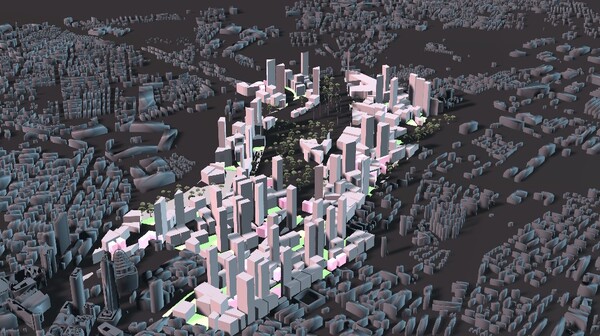I have a keen interest in the way architecture impacts societies and communities and aim to use my skills in research and computation to create and investigate the ways in which we can programme our designs to better benefit the world we live in through building performance and liveability in addition to the efficiency of construction as a whole.
As part of a group of four this year (consisting of Abdullah Jawdatt, Bethany Stewart, Ladi Shobowale and myself) I have been able to explore the ways in which computation can push the boundaries and solve problems that present themselves on a global scale such as the housing and climate crises which are intrinsically linked within the context of urban development.
Our project’s focus is on the resulting homelessness caused by the housing crisis, in addition to the looming dangerous effects of the housing and climate crisis on low income individuals. It targets these problems and creates the potential solution using our thoroughly researched and tested design and planning support tool: the A2ZCEG Model.
By creating and suggesting sustainability and performance measures, the project offers a computational and architectural solution for those using the tool. As it fulfils its purpose as an urban planning and design support tool, it uses profiles based on the targeted users to calculate and design the best possible solution for the development and its user using carbon emission and energy calculators, accessibility scores generated by journey simulation as well as parametric building design in the generation of the optimal outcome. The recommendations made within the tool include lowest carbon emission options for journeys on and around site, most effective and low carbon renewable energy generation systems, optimal arrangement of typologies and amenities on site to foster social equity and affordability, as well as optimisation of energy use in buildings on site for cost effectiveness.


